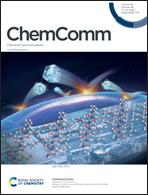Polyprotein synthesis: a journey from the traditional pre-translational method to modern post-translational approaches for single-molecule force spectroscopy
Abstract
Polyproteins, an array of protein units of similar or differential functions in tandem, have been extensively utilized by organisms, unicellular or multicellular, as concentrators of the myriad of molecular activities. Most eukaryotic proteins, two-thirds in unicellular organisms, and more than 80% in metazoans, are polyproteins. Although the use of polyproteins continues to evolve in nature, our understanding of the structure–function–property of polyproteins is still limited. Cumbersome recombinant strategies and the lack of convenient in vitro synthetic routes of polyproteins have been rate-determining factors in the progress. However, in this review we have discussed the revolutionary journey of polyprotein synthesis with a major focus on surface-based structure–function–property studies, especially using force spectroscopy at the single-molecule level.



 Please wait while we load your content...
Please wait while we load your content...